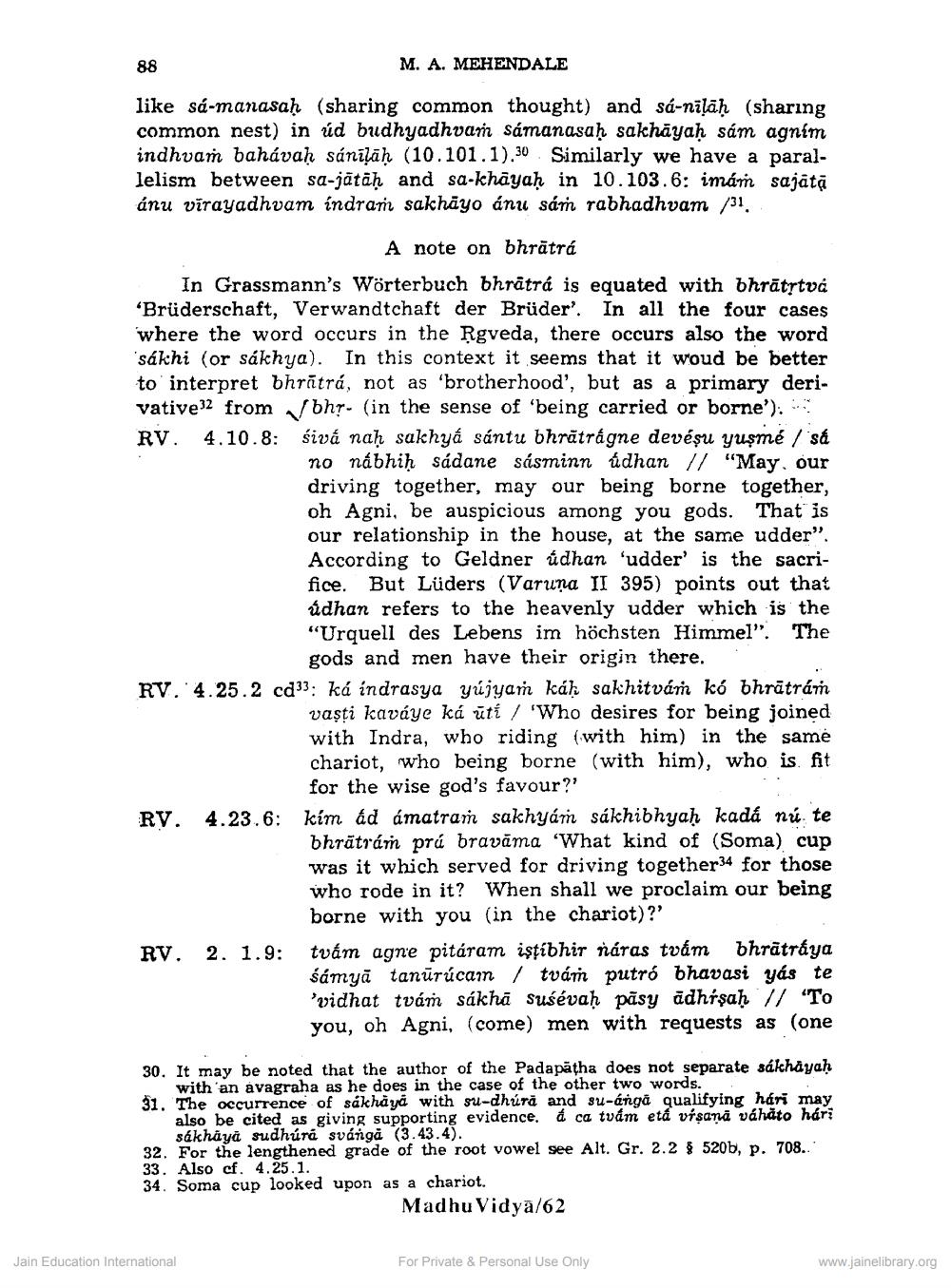________________
88
M. A. MEHENDALE
like sa-manasaḥ (sharing common thought) and sá-nilāḥ (sharing common nest) in úd budhyadhvar sámanasaḥ sakhāyaḥ sám agnim indhvam bahávaḥ sánīļāḥ (10.101.1).30 Similarly we have a parallelism between sa-jātāḥ and sa-khāyaḥ in 10.103.6: imám sajátā ánu vīrayadhvam indran sakhãyo ánu sám rabhadhvam /31.
A note on bhrātrá In Grassmann's Wörterbuch bhrattá is equated with bhrātstvá 'Brüderschaft, Verwandtchaft der Brüder'. In all the four cases where the word occurs in the Rgveda, there occurs also the word sákhi (or sakhya). In this context it seems that it woud be better to interpret bhrātrá, not as 'brotherhood', but as a primary derivative32 from bhr. (in the sense of being carried or borne'): ** RV. 4.10.8: sivá nah sakhyá sántu bhräträgne devéşu yuşmé / så
no nábhiḥ sádane sásminn údhan // "May. our driving together, may our being borne together, oh Agni, be auspicious among you gods. That is our relationship in the house, at the same udder". According to Geldner údhan 'udder' is the sacrifice. But Lüders (Varuna II 395) points out that údhan refers to the heavenly udder which is the "Urquell des Lebens im höchsten Himmel". The
gods and men have their origin there. RV. 4.25.2 cd33: ká indrasya yújyan káh sakhitvám ko bhrātrán
vasti kaváye káūtí / 'Who desires for being joined with Indra, who riding (with him) in the same chariot, who being borne (with him), who is fit
for the wise god's favour?' RV. 4.23.6: kim ád ámatram sakhyám sákhibhyah kadá nú te
bhrātrám prú bravama 'What kind of (Soma) cup was it which served for driving together34 for those who rode in it? When shall we proclaim our being
borne with you in the chariot)?' RV. 2. 1.9: tvám agne pitáram isţibhir náras tvám bhrātráya
śámyā tanürúcam / tvám putró bhavasi yás te 'vidhat tvám sákhā suśévaḥ päsy ädhrşah // "To you, oh Agni, (come) men with requests as (one
30. It may be noted that the author of the Padapatha does not separate sálchayah
with 'an avagraha as he does in the case of the other two words. The occurrence of sákhaya with su-dhúri and su-ánga qualifying hári may also be cited as giving supporting evidence. & ca tvám etå vísana váhäto hári
sákhaya sudhúra svángá (3.43.4). 32. For the lengthened grade of the root vowel see Alt. Gr. 2.2 8 520b, p. 708. 33. Also cf. 4.25.1. 34. Soma cup looked upon as a chariot.
Madhu Vidya/62
Jain Education International
For Private & Personal Use Only
www.jainelibrary.org




